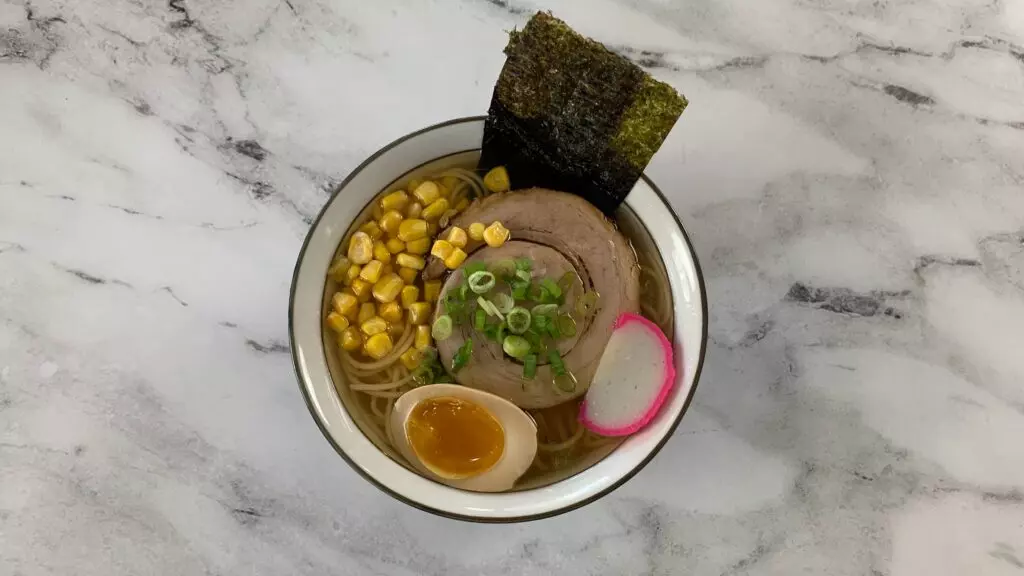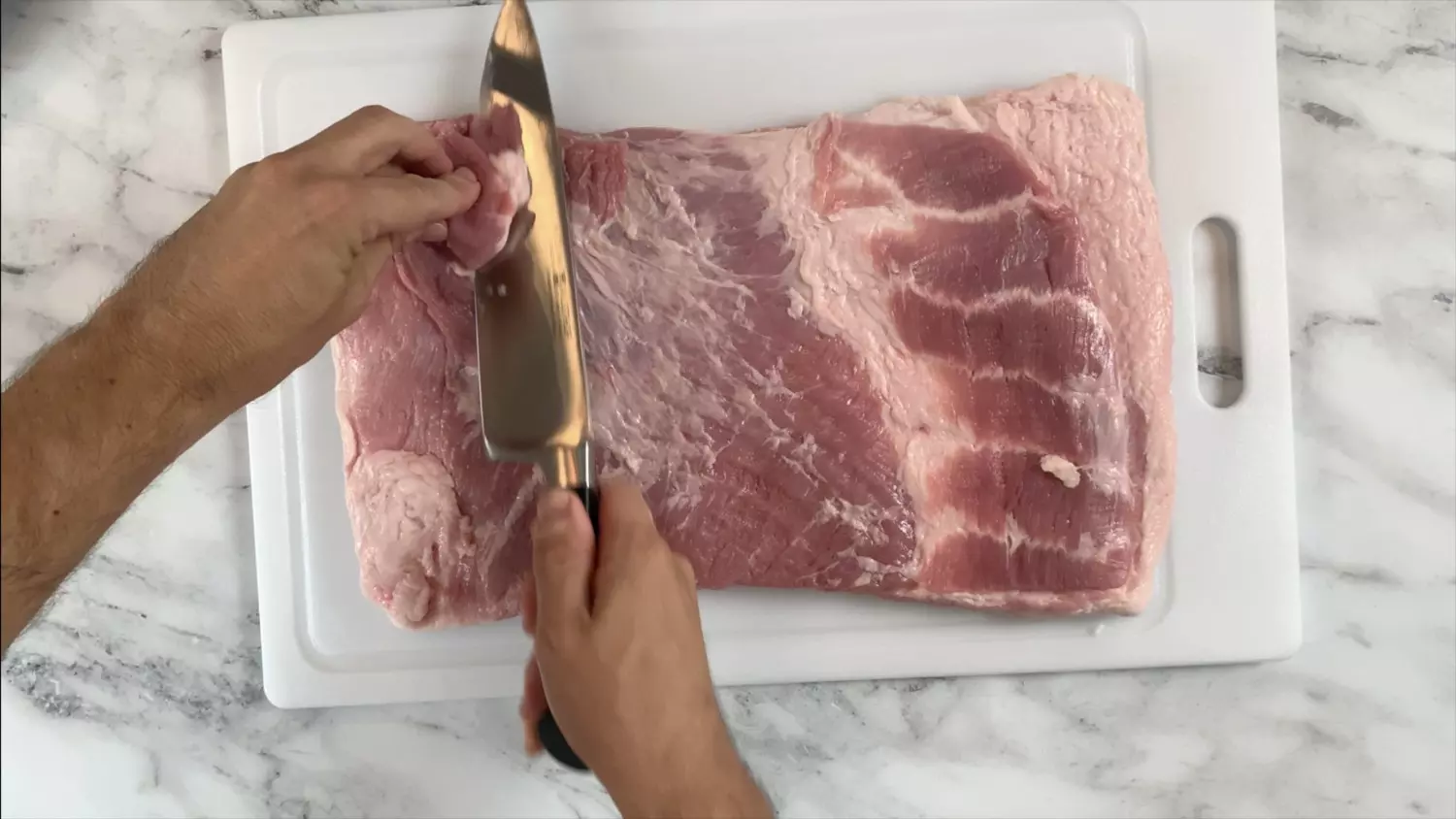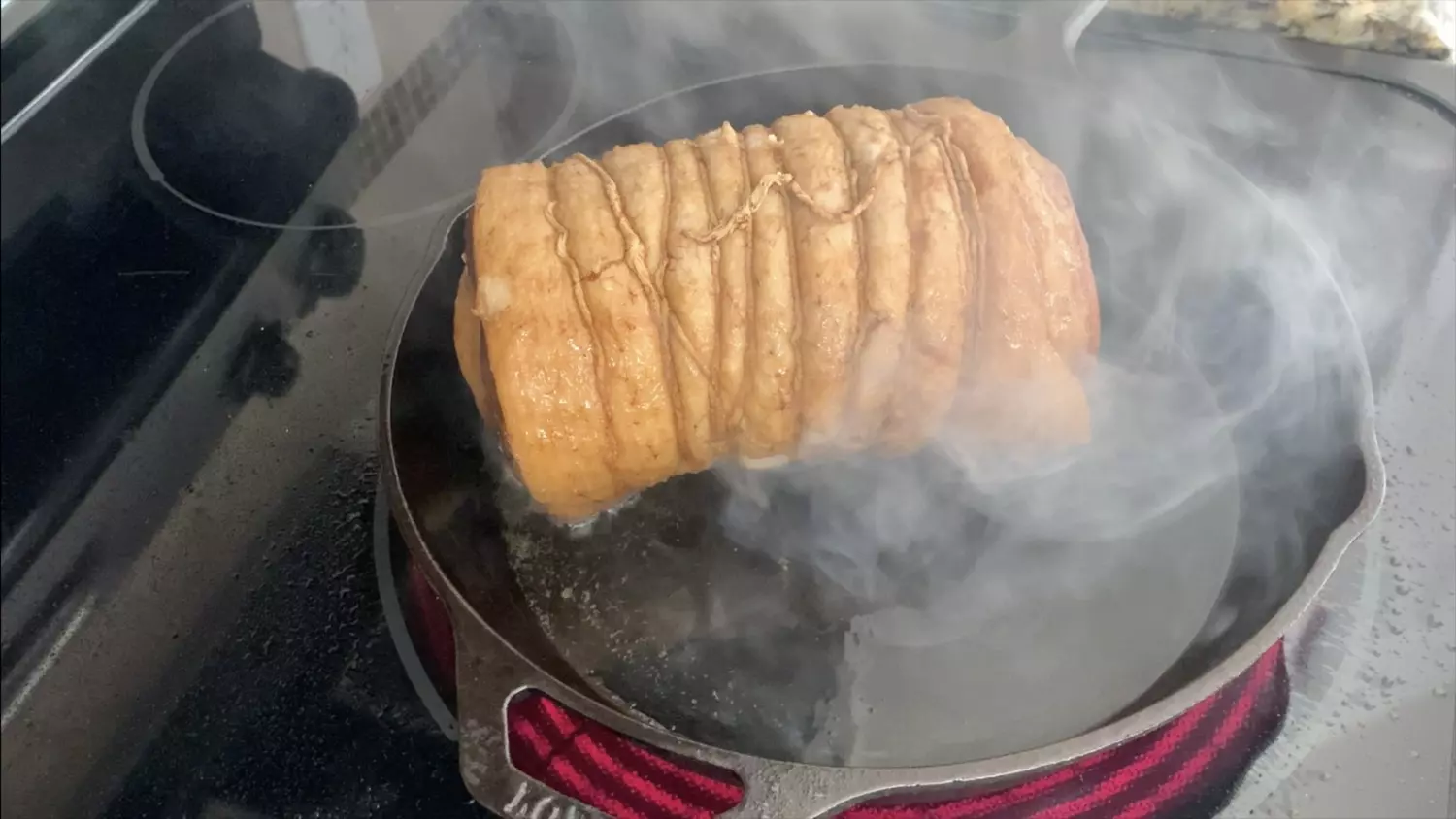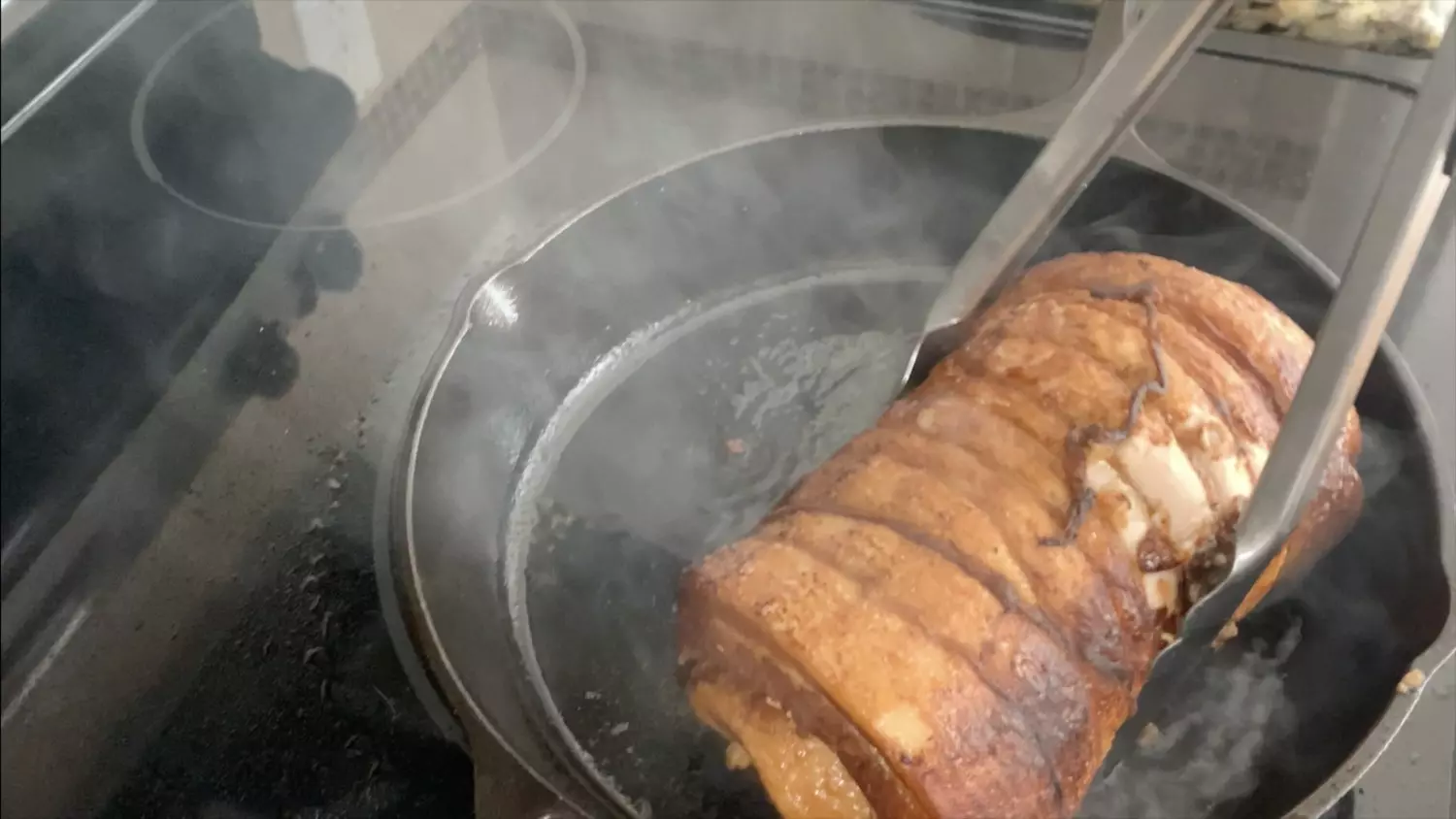
Chashu pork, or braised pork belly, is most commonly known as the savory addition that adds a depth of flavor to your favorite bowl of ramen. However, this traditional Japanese dish is also used in several other recipes as well including rice bowls and bento boxes. Chashu pork brings a savory depth of flavor to any dish.
While it is a more time consuming dish to prepare, the end result is well worth the effort. In this article we will take you through how to make this traditional recipe step-by-step.

Table of Contents
What is Chashu?

Chashu is Japanese braised pork belly. Traditionally, the pork belly is rolled and braised over the course of a couple hours in a combination of cooking juices that typically consist of soy sauce, mirin, sake, garlic, ginger and green onions. After braising, the pork belly is then seared on all sides to lock in the flavor.
Some newer preparation methods don’t require the pork belly to be rolled but still braise and sear it using the same or similar ingredients. I personally prefer rolling my chashu as I like how the round slices fit into my bowl of ramen.
How is Chashu Pork Used?

The most common use for chashu is as a topping in ramen. In fact, it’s difficult to imagine a ramen shop not serving this savory slice of pork with most varieties of ramen. However, chashu can also used as the primary protein in rice bowls and salads. I have also seen it used as a component in fried rice and stir fry dishes.
For a delicious ramen recipe check out the following article: Savory Shio Ramen
How Long Does Chashu Last?
As long as it’s properly stored in an airtight container, you can expect your chashu pork to last around 7 days in the refrigerator. I would only slice the chashu as needed when storing in the fridge.
If you don’t anticipate using the entire pork chashu within 7 days, you can freeze it. As long as it is properly stored, you can expect your chashu pork to last around 2-3 months in the freezer. I think a freezer bag works best for storing your pork chashu but any freezer-safe container will work. I would also slice prior to freezing so you can only thaw what you need when you are ready to use.
When you are ready to use, thaw overnight in the fridge. I then like to reheat my chashu in a skillet with a couple tablespoons of the cooking juices.
How do you Make Pork Chashu?
1. Examine your pork belly to make sure it has roughly the same thickness throughout and will roll evenly. Shave thicker parts if necessary.

2. Use fork to poke holes in both sides of the pork belly. This will help the liquids to better absorb into the meat.

3. Roll the pork belly tight starting at the shortest side and tie with butchers twine. There are several different ways to do this but the important thing is to make sure the belly remains tightly wrapped during cooking. See video for an example of how to tie your pork belly.

4. To remove impurities from the meat, add wrapped pork belly to a pot filled with enough water to submerge all or most of the pork belly and bring to a boil.

5. Once boiling, remove pork from pot and rinse off with water.

6. Add sugar, soy sauce, mirin, sake and water to a pot just large enough for the pork belly to fit into but not much larger. The pork belly will shrink as it cooks. Bring mixture to a boil, stirring as you do so to dissolve sugar.

7. While wet ingredients and sugar are coming to a boil, slice ginger into 1/2 inch slices leaving skin on.
8. Once boiling and sugar is dissolved, reduce heat to simmer and add the pork belly along with ginger, garlic, and green onions. The liquid should be cover roughly 3/4 of the pork belly. If it isn’t, add more water until it is.

9. Cover with a lid and simmer for 2 hours, flipping the pork in the pot every 30 minutes.

10. After two hours of simmering, remove the pork from the pot let both the pork and the cooking liquids cool for 20 minutes.

11. After cooking liquids are cool enough to work with, strain into a large bowl. Skim any fat that may float to the top as the cooking liquids continue to cool. Do not discard the cooking liquids as you will use later.

12. After the pork has cooled, heat vegetable oil on medium high heat in a cast iron skillet.

13. Once the pan is hot, sear all sides of the pork belly until the pork turns a light brown color.

14. Once seared, remove pork and place on a plate to cool.

15. After the pork is cooled, place in a freezer bag and add enough of the cooking liquids to submerge the pork. Squeeze all the air out of the bag, seal, and place in fridge overnight. Save the remaining cooking liquids in the fridge or freezer as you can use those in other dishes or as a sauce to reheat the chashu.

16. The next day, remove the twine and slice chashu pork as needed. For ramen, I like to cut into 1/4 inch thick slices. I would only cut what you need at any given time. Chashu will store in the fridge for 7 days and in the freezer for 2-3 months.

17. To reheat chashu, I like to heat a couple tablespoons of the cooking liquid in a cast iron skillet and add the slices of chashu. Let simmer for a minute or two flipping as needed.

Chashu Pork Recipe

Chashu Pork Recipe
Equipment
- Butchers twine
- 1 Pot
- Cooking tongs
- Cooking shears
- 1 Sharp knife
Ingredients
- 1 Pork belly 4 lbs.
- 1 Ginger root 2 inches
- 3 Green onions
- 10 cloves Garlic
- 1 1/2 cups Soy sauce
- 1 cup Mirin
- 1 cup Sake
- 1/2 cup Sugar
- 4-6 cups Water
- 2 Tbsp. Vegetable oil
Instructions
- Examine your pork belly to make sure it has roughly the same thickness throughout and will roll evenly. Shave thicker parts if necessary.
- Use fork to poke holes in both sides of the pork belly. This will help the liquids to better absorb into the meat.
- Roll the pork belly tightly starting at the shortest side and tie with butchers twine. There are several different ways to do this but the important thing is to make sure the belly remains tightly wrapped during cooking.
- To remove impurities from the meat, add wrapped pork belly to a pot filled with enough water to submerge all or most of the pork belly and bring to a boil.
- Once boiling, remove pork from pot and rinse off with water.
- Add sugar, soy sauce, mirin, sake and water to a pot just large enough for the pork belly to fit into but not much larger. Bring mixture to a boil, stirring as you do so to dissolve sugar.
- While wet ingredients and sugar are coming to a boil, slice ginger into 1/2 inch slices leaving skin on.
- Once boiling and sugar is dissolved, reduce heat to simmer and add ginger, garlic, and the pork belly. The liquid should be cover roughly 3/4 of the pork belly. If it isn't, add more water until it is.
- Cover with a lid and simmer for 2 hours, flipping the pork in the pan every 30 minutes.
- After two hours of simmering, remove the pork from the pot let both the pork and the cooking liquids cool for 20 minutes.
- After cooking liquids are cool enough to work with, strain into a large bowl. Skim any fat that may float to the top as the cooking liquids continue to cool. Do not discard the cooking liquids as you will use later.
- After the pork has cooled, heat vegetable oil on medium high heat in a cast iron skillet.
- Once the pan is hot, sear all sides of the pork belly until the fat turns a light brown color.
- Once seared, remove pork and place on a plate to cool.
- After the pork is cooled, place in a freezer bag and add enough of the cooking liquids to submerge the pork. Squeeze all the air out of the bag, seal, and place in fridge overnight. Save the remaining cooking liquids in the fridge or freezer as you can use those in other dishes or as a sauce to reheat the chashu.
- The next day, remove the twine and slice chashu pork as needed. For ramen, I like to cut into 1/4 inch thick slices. I would only cut what you need at any given time. Chashu will store in the fridge for 7 days and in the freezer for 2-3 months.
- To reheat chashu, I like to heat a couple tablespoons of the cooking liquid in a cast iron skillet and add the slices of chashu. Let simmer for a minute or two flipping as needed.
Video
Nutrition
Frequently Asked Questions
Is chashu used in dishes other than ramen?
Yes, while chashu is most commonly eaten as a topping in ramen, chashu pork is also used in other dishes such as rice bowls, stir fry dishes and more.
Is chashu gluten-free?
Chashu pork is most often not gluten-free as it is cooked in soy sauce. However, you can make it gluten-free by substituting the regular soy sauce with a gluten-free soy sauce.
Is chashu always made with pork?
Traditional chashu consists of a pork belly that is braised in cooking juices. However, some Western chefs have created a chicken chashu that is sometimes served in place of the traditional pork chashu in some of the chicken based ramens such as shio ramen.
Final Thoughts on Chashu Pork
Chashu pork is not only an essential component to most ramen dishes, it also makes a delicious addition to a rice bowl or bento box. We hope that you have enjoyed this recipe as you continue your journey into the Japanese culinary world. Happy cooking!
Check out the below articles for more great recipes:
Authentic Shrimp Tempura Recipe
Chirashi Bowl (Chirashizushi) Recipe
Ikura Sushi: What it is and How to Make it
Also, for more great videos subscribe to our YouTube Channel.
